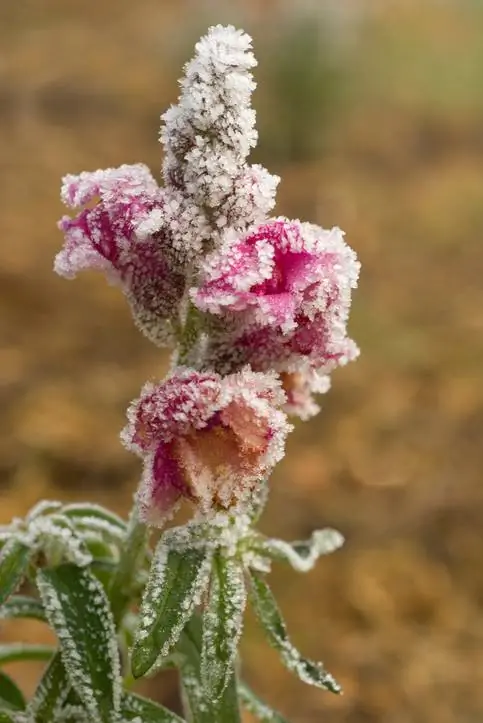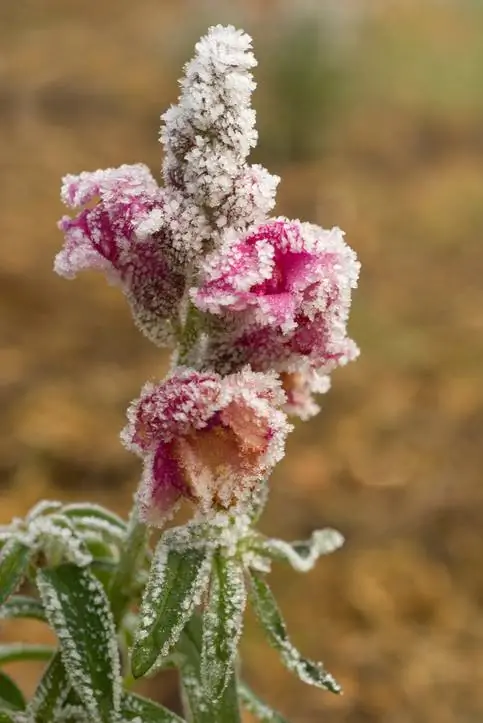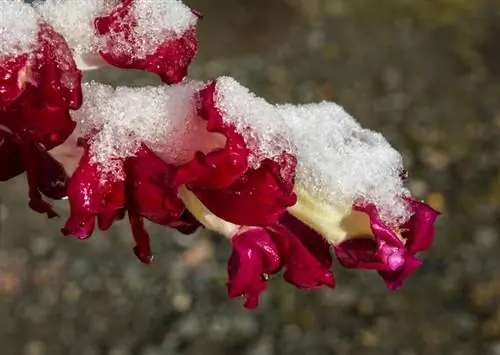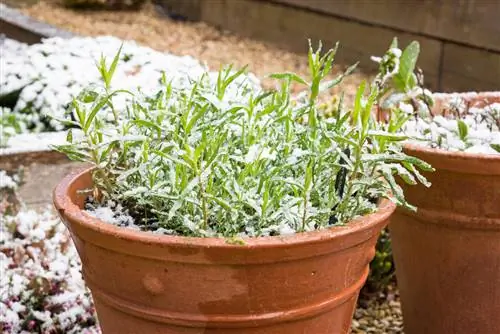- Author admin [email protected].
- Public 2023-12-16 16:46.
- Last modified 2025-06-01 06:02.
The snapdragons that are often found in our gardens are considered relatively insensitive to frost and are therefore hardy. Unfortunately, this statement does not apply to all perennials, because how frost-resistant snapdragons are depends primarily on the type of cultivation.

Are snapdragons hardy?
Snapdragons are hardy to varying degrees depending on the type of cultivation. F1 hybrids are usually not winter-hardy and are not worth overwintering. Real snapdragons, on the other hand, are considered hardy and can survive frosty temperatures if prepared well. Pay attention to the origin of the seeds or plants.
Hybrids are not winter hardy
Many snapdragons sold in stores are F1 hybrids, specially bred plants that have been inbred to meet the requirements of consumers. This can also apply to seeds. A look at the packaging will tell you whether it is a genetically modified plant or a “real” snapdragon.
These hybrids usually only bloom beautifully in the first year and then have used up their strength. In the second year they only produce sparse flowers and grow much less vigorously. They are also infertile in most cases. If they still form seeds, the properties of the plants grown resemble their grandparents.
Since the hybrids are not assertive perennials, the effort of overwintering is not worth it. Dig up these snapdragons in the fall and replace the plants with newly purchased perennials or home-grown snapdragons next spring.
Overwintering snapdragons
This is different with “real” snapdragons, which thrive as perennials and cannot be harmed by temperatures even below zero.
This is how wintering works well:
- Do not cut back snapdragons in autumn, as the naturally grown foliage provides good protection from the cold.
- Spread a layer of mulch and spruce branches over the plant.
- In April the winter protection is removed and the snapdragon is cut back to a height of one to two hand widths above the ground.
- Work some compost soil and horn shavings (€52.00 on Amazon) into the soil as a start-up for the new gardening year.
Digging up snapdragons
In very harsh regions, snapdragons sometimes do not survive the extremely low temperatures. You often read the advice to dig up the plants here and overwinter the root ball with the above-ground plant parts cut back to about a hand's width in the basement.
This works well, but weakens the flowering plant so much that it produces significantly fewer flowers the next year. That's why in very cold locations it often makes more sense not to overwinter the snapdragons but to replant them every spring.
Overwintering the snapdragons on the balcony
Here too, it is only worth overwintering the real snapdragons.
- Move the planters as close as possible to the protective house wall.
- Place clay pots on Styrofoam or wood to protect them from severe ground frosts. - Cover plants with a breathable, warming fleece or brushwood.
Tip
If you want to cultivate snapdragons for many years, you should make sure when sowing that they are not hybrids. In this case, it is recommended to use genetically modified organic seeds.






